Baseball enthusiasts and fans of the long ball, get ready to explore the realm of the 10 biggest MLB stadiums where hitting a home run becomes a tantalizing possibility.
While outfield dimensions may vary, it’s not always the largest parks that pose the greatest challenge to pitchers.
Surprisingly, some of the most hitter-friendly stadiums in the majors boast expansive fields that seem tailor-made for power hitters.
From the iconic Fenway Park with its infamous Green Monster to the high-altitude Coors Field in Colorado, each stadium offers a unique setting for players to showcase their hitting prowess.
As we delve into the world of these colossal ballparks, it becomes evident that factors like wind speed, altitude, and field dimensions play a crucial role in shaping the home run landscape.
Whether it’s the symmetrical layout of US Cellular Field or the pitcher’s nightmare at Coors Field, each stadium presents its own set of challenges and opportunities for batters.
Join us on a journey through these legendary stadiums where the crack of the bat and the roar of the crowd merge in perfect harmony.
Exploring the Top 10 Largest MLB Stadiums
Exploring the top 10 largest MLB stadiums can be a fascinating dive into the world of baseball and sports architecture.
Here’s an overview of these impressive venues:
No. 10: Kauffman Stadium, Kansas City
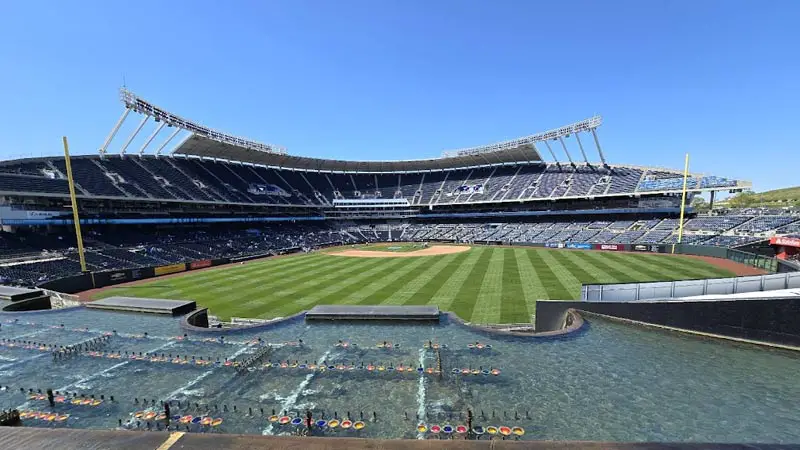
Kauffman Stadium in Kansas City, known for its vast outfield, offers a challenging yet rewarding field for hitters.
Despite having one of the largest dimensions in baseball, it surprisingly ranks as one of the most hitter-friendly stadiums, providing players with the opportunity to showcase their power.
Fans and players alike appreciate the unique design of Kauffman Stadium, which not only requires skill and precision to hit a home run but also rewards those who can master its expansive outfield with an impressive display of power and strength.
No. 9: Rogers Centre, Toronto
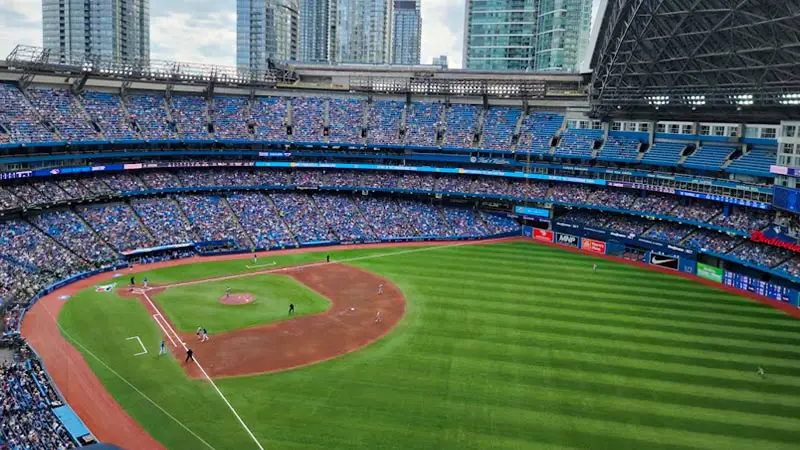
Rogers Centre in Toronto stands as one of the larger stadiums in Major League Baseball. With its expansive outfield, hitters have a chance to capitalize on the dimensions of the field to send home runs soaring.
The stadium’s design caters to power hitters, making it an exciting venue for fans and players alike. At the opposite end of the spectrum is Fenway Park in Boston, known for its iconic Green Monster wall in left field.
Despite being one of the smallest MLB stadiums, Fenway Park presents a unique challenge and opportunity for batters to showcase their hitting prowess with strategic home runs.
No. 8: Tropicana Field, St. Petersburg
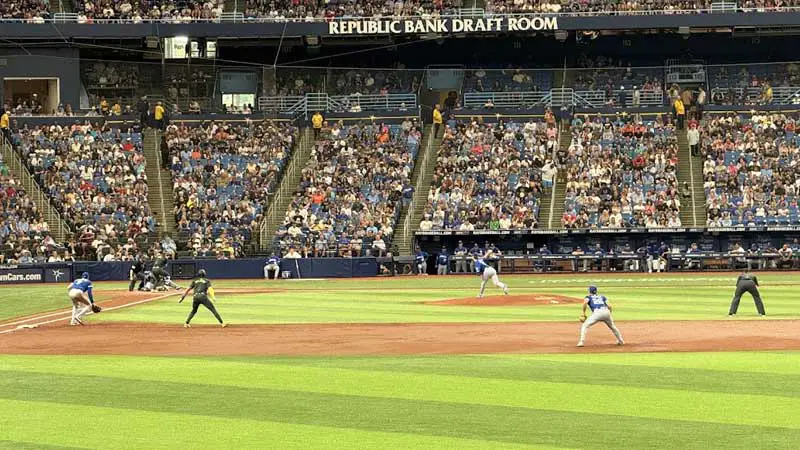
Tropicana Field in St. Petersburg, though not among the largest stadiums, offers unique dimensions that challenge hitters to aim for the fences.
Despite its charm, or lack thereof, this stadium provides an intriguing backdrop for home run-hitting performances, adding a distinct flavor to the game.
If you are a fan of home runs, Tropicana Field in St. Petersburg is a must-visit due to its unique dimensions that create an interesting challenge for hitters looking to hit the ball out of the park.
The stadium’s unconventional layout adds an extra layer of excitement to any home run hit within its confines.
No. 7: Chase Field, Phoenix
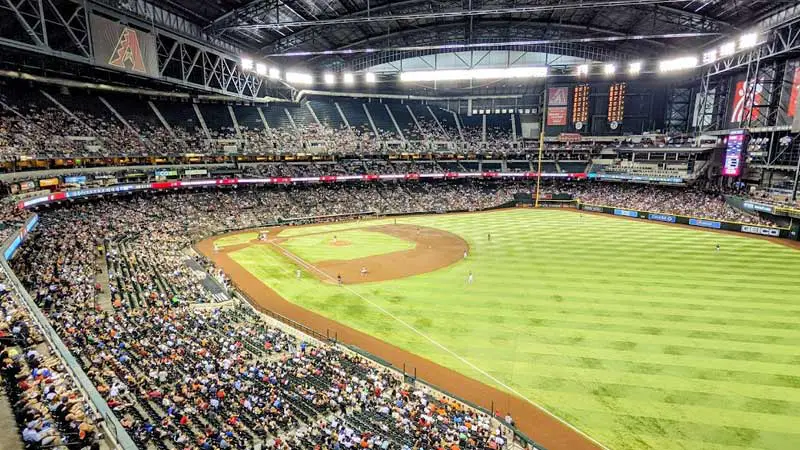
Chase Field in Phoenix boasts considerable dimensions, setting the stage for thrilling home run moments. With its size and layout, this stadium offers both challenges and opportunities for hitters to showcase their skills.
The altitude and dry air further contribute to the dynamics of hitting home runs in this venue. Considering the factors at play in Chase Field, it comes as no surprise that many players strive to hit memorable home runs at this MLB stadium.
The unique combination of dimensions, altitude, and dry air creates a distinctive environment for showcasing hitting prowess and making a mark in baseball history.
No. 6: Coors Field, Denver
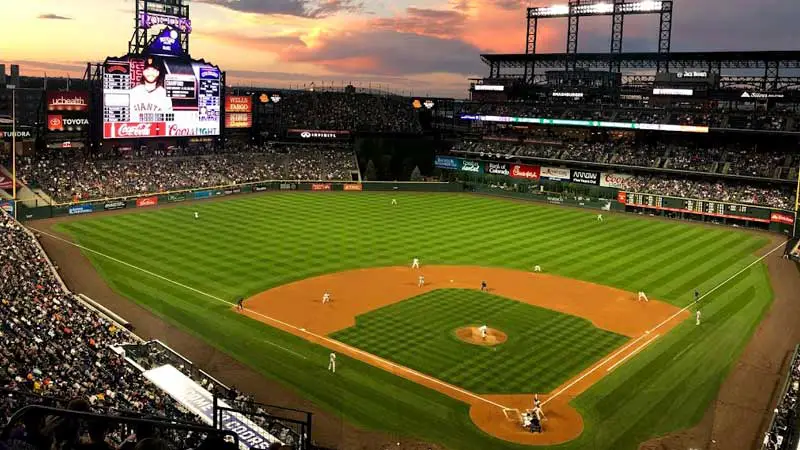
Coors Field in Denver is renowned for its perfect storm of elements that favor home runs. The altitude, wind, and dry air create an environment where hitting the long ball becomes a common sight.
This stadium’s dimensions and atmospheric conditions make it a paradise for power hitters looking to add to their home run tally. Another MLB stadium known for its home run-friendly characteristics is Yankee Stadium in New York City.
With its short right-field porch and favorable wind patterns, it provides an enticing target for left-handed batters aiming to send balls into the stands.
No. 5: Yankee Stadium, New York
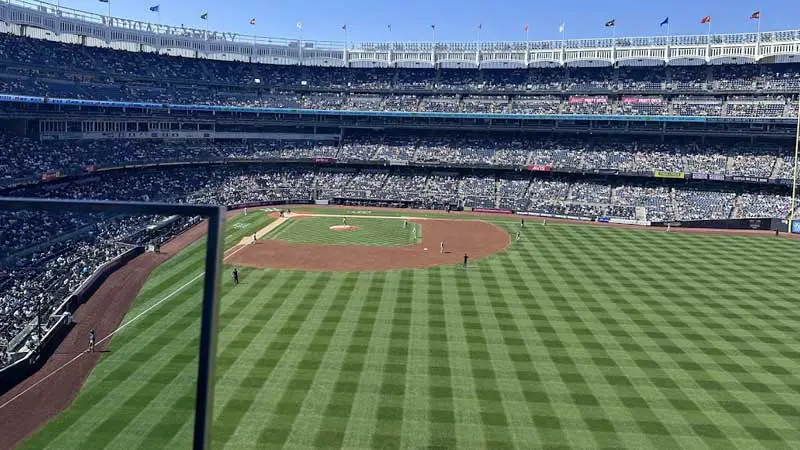
Yankee Stadium in New York provides hitters with a field conducive to home runs, offering relatively short distances to the fences in certain areas.
Despite being among the largest stadiums, the design of Yankee Stadium caters to players looking to showcase their power-hitting abilities, making it an enticing venue for fans and athletes.
Visiting Oracle Park in San Francisco is another great opportunity for hitters to aim for those home runs.
Even though it is known for its pitcher-friendly dimensions, there are specific areas in the park where batters can capitalize and send the ball flying out of the ballpark.
This combination of challenges and opportunities makes Oracle Park a unique and exciting destination for both players and spectators.
No. 4: Oriole Park at Camden Yards, Baltimore
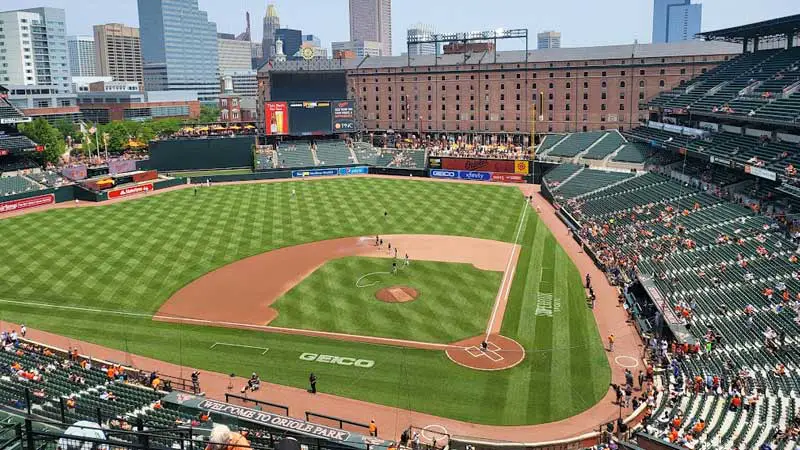
Oriole Park at Camden Yards in Baltimore is revered for its unique design that heightens the possibility of home runs.
Despite not being the largest stadium, its dimensions and layout create an environment where hitters can excel in launching the ball out of the park.
The stadium’s characteristics make it an intriguing venue for home run enthusiasts. This makes Oriole Park at Camden Yards a standout choice for both players and spectators seeking an exhilarating home run experience in a distinctive setting.
No. 3: Globe Life Park in Arlington, Texas
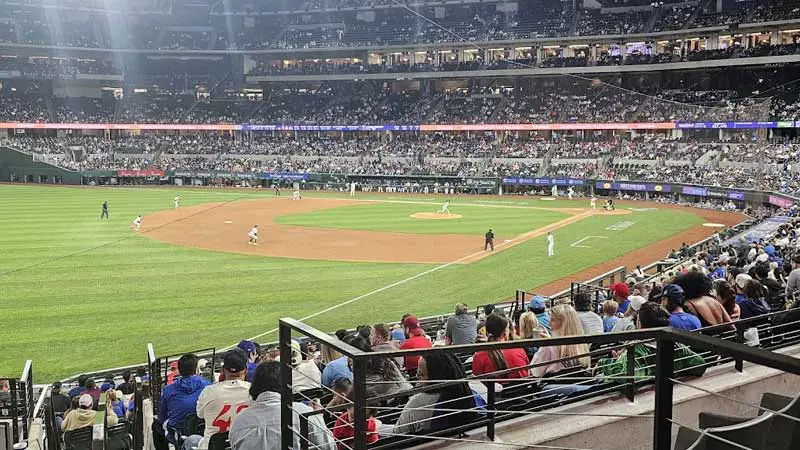
Globe Life Park in Arlington, Texas, presents a field where hitters have the opportunity to take advantage of the dimensions to hit home runs.
Despite the notorious humid air of the region, this stadium has witnessed thrilling home run moments over the years, showcasing the power of the players who step up to the plate.
Fenway Park in Boston, Massachusetts, is another iconic stadium known for its unique dimensions that make it possible for players to hit remarkable home runs.
Its storied history and passionate fans create an electrifying atmosphere for both players and spectators alike.
No. 2: Dodger Stadium, Los Angeles
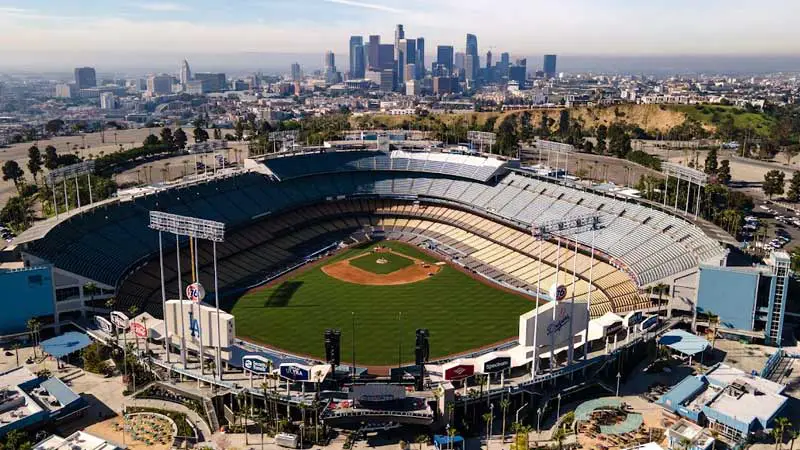
Dodger Stadium in Los Angeles stands out as one of the prominent stadiums in Major League Baseball for its size and layout.
Hitters at this stadium face a field that challenges them to aim for the fences, offering a blend of difficulties and opportunities for players to display their power-hitting prowess. The stadium’s atmosphere adds to the allure of hitting home runs in this iconic venue.
From the iconic Green Monster at Fenway Park to the spacious outfield of Yankee Stadium, each of these MLB stadiums presents a unique set of challenges and advantages for hitters looking to hit a home run. Each venue contributes to the overall excitement and drama of the game.
No. 1: Marlins Park, Miami
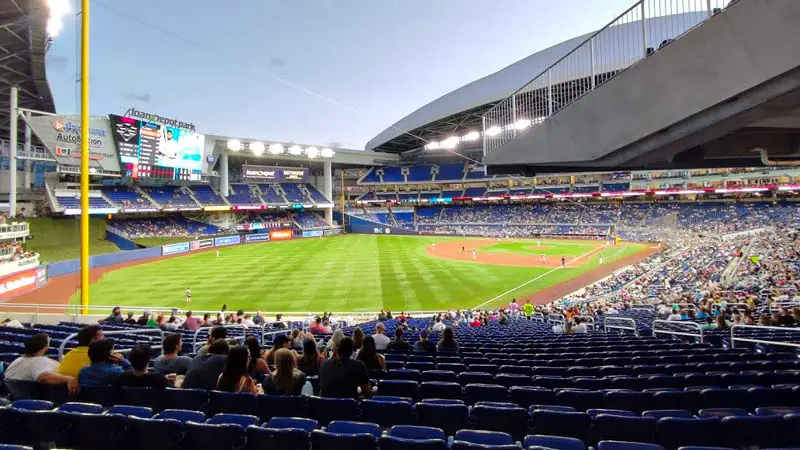
Marlins Park in Miami tops the list as one of the largest MLB stadiums where hitting home runs becomes an art form.
With its dimensions and layout, Marlins Park provides a platform for players to unleash their power at the plate, captivating audiences with remarkable displays of home run hitting.
The stadium’s characteristics make it a prime location for witnessing impressive home run feats in Major League Baseball.
Other notable MLB stadiums that make the list for being conducive to hitting home runs include Yankee Stadium in New York, Coors Field in Denver, and Guaranteed Rate Field in Chicago.
These stadiums feature dimensions and conditions that often lead to awe-inspiring displays of power hitting on the field, attracting fans looking to witness impressive home runs in action.
Factors Affecting Home Run Statistics in Large Stadiums
Several factors can significantly impact home run statistics in large MLB stadiums:
Altitude Advantage
The elevation of a stadium can significantly impact home run statistics. Ballparks located at higher altitudes like Coors Field in Colorado offer less air resistance, allowing balls to travel further when hit, leading to an increase in home runs.
Other MLB stadiums known for their elevation and tendency to favor hitters include Chase Field in Arizona, Globe Life Field in Texas, and Yankee Stadium in New York. These stadiums often see a higher number of home runs due to their atmospheric conditions.
Wind Conditions
Wind patterns play a crucial role in determining home run statistics in large stadiums. Cities like Chicago, known for high wind speeds, can either help or hinder hitters based on the direction and intensity of the wind during games.
In contrast, stadiums like Yankee Stadium and Coors Field are known for their dimensions and elevation, factors that significantly impact a player’s ability to hit a home run. The design of a stadium can create unique challenges and advantages for hitters.
Field Dimensions
The symmetrical dimensions of a field, such as those at US Cellular Field in Chicago, with 347 feet in left and right and 400 feet in dead center, can influence the number of home runs hit.
Shorter distances to the outfield walls make it easier for hitters to clear the fences. The shape and size of a baseball stadium can have a significant impact on the likelihood of hitting a home run.
With shorter distances to the outfield walls like the 347 feet in left and right and 400 feet in dead center at US Cellular Field in Chicago, batters have an advantage in clearing the fences.
Climate Factors
Stadiums in regions with dry air, like those with desert climates, can also affect home run statistics. The combination of low humidity and hot temperatures in places like Phoenix can help balls carry further, increasing the likelihood of more home runs.
Teams playing in MLB stadiums such as Chase Field in Phoenix benefit from the dry desert air, enhancing the chances of hitting home runs due to the low humidity and high temperatures facilitating the ball to travel longer distances.
Pitching Challenges
In hitter-friendly stadiums, such as those with short distances down the outfield lines like Yankee Stadium in New York at 314 feet, pitchers face additional challenges in preventing home runs.
The dimensions of the field may favor hitters, making it harder for pitchers to keep the ball in the park . 10 biggest MLB stadiums in terms of the outfield size are more pitcher-friendly, offering larger distances to hit a home run.
This gives pitchers an advantage by making it easier to keep the ball in the park, compared to hitter-friendly stadiums like Yankee Stadium.
Frequently Asked Questions
What impact do MLB stadiums have on home run statistics?
MLB stadiums affect home run statistics through factors like altitude, wind conditions, field dimensions, and climate, influencing hitting outcomes.
How do hitter-friendly stadiums like Yankee Stadium challenge pitchers?
Pitchers face challenges in maintaining effective gameplay strategies in hitter-friendly stadiums like Yankee Stadium due to the favorable conditions for batters.
What interactions shape game outcomes in renowned baseball venues?
The interactions between stadium attributes and player performance create an intricate balance that influences game outcomes in renowned baseball venues.
Conclusion
The top 10 biggest MLB stadiums offer unique features that significantly affect home run statistics. Factors like altitude, wind conditions, field dimensions, and climate play a crucial role in shaping the dynamics of hitting home runs in these large venues.
These elements not only add excitement to the game but also pose challenges for pitchers in maintaining effective gameplay strategies.
The interactions between these stadium attributes and player performance highlight the intricate balance that influences the outcomes of games in these renowned baseball venues.
Players competing in these sizable stadiums must adapt their gameplay to account for the various factors that impact home run potential, such as wind patterns and altitude differences.
The interplay between these conditions and player strategies underscores the complexity of achieving success in these iconic ballparks.

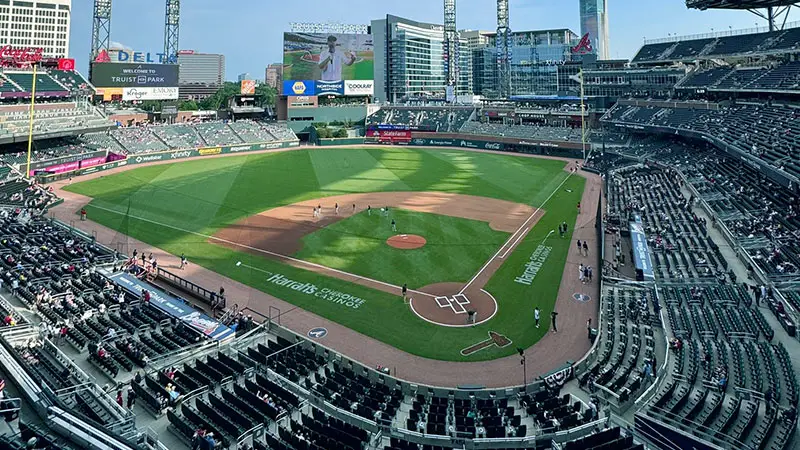
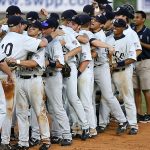

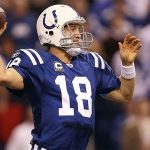


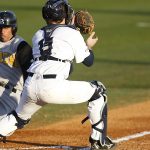
Pat Bloom